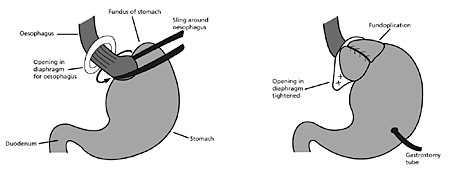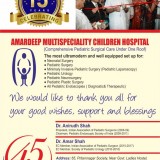What is gastro-oesophageal reflux?
Normally, when we swallow food and drink, it moves down the foodpipe (oesophagus) to the stomach, where it starts to be broken down by the acids released from the stomach wall. After it has been partially broken down, it passes through to the small and large intestines, where all the goodness and excess water is removed.
When a baby or child has gastrooesophageal reflux, the food and drink travels down the foodpipe as normal, but some of the mixture of food, drink and acid travels back up the foodpipe, instead of passing through to the large and small intestines. As the food and drink is mixed with acid from the stomach, it can irritate the lining of the foodpipe, making it sore. This is gastro-oesophageal reflux disease. Some children also breathe some of the mixture into the windpipe (aspiration), which can irritate the lungs and cause chest infections.
In some children, the symptoms associated with gastro-oesophageal reflux disease disappear with or without treatment, usually by the age of two. However, in some children, gastro-oesophageal reflux disease is more of a long-term condition and can have a serious effect on both the child and family’s quality of life. The options for treating gastro-oesophageal reflux disease are improving all the time, with new medicines and surgical options being discovered.
Remember, not all children with gastroesophageal reflux need surgery.
What is Fundoplication?
A fundoplication is an operation used to treat gastro-oesophageal reflux. It uses the top of the stomach to strengthen the sphincter so it is less likely to allow food, drink or acid to travel back into the foodpipe.
What does the operation involve?

Many a times, this surgery can also be done with the help of laparoscopy or key hole surgery.
There is a chance that keyhole surgery will not be possible for your child. Sometimes the surgeon will not be able to carry out an operation using the keyhole method for technical reasons, or because of unexpected findings. If this is the case, the surgeon will carry out the operation using a larger incision (cut) instead.
Details regarding the same will be explained to you by your doctor.
Are there any risks?
Every anaesthetic carries a risk of complications but this is very small. Any surgery carries a small risk of infection or bleeding.
What happens afterwards?
Your child will be monitored closely for the first couple of days.
After keyhole surgery, some older children may complain of shoulder pain and some crackling under the skin, caused by the carbon dioxide escaping into the tissue just under the skin; this does not usually last long and gradually improves over a day or two.
Your child will be able to drink when drainage from the naso-gastric tube or gastrostomy has slowed down and the fluid draining away is clear. As he or she gets used to drinking, small amounts of soft food can be added until your child is eating and drinking normally again. It may take up to 7 – 10 days for your child’s eating and drinking to get back to how it was before the operation.
Once your child is eating and drinking as normal and has recovered well from the operation, he or she will be able to go home. Most children stay in hospital for about five to seven days after this operation.
Are there any long-term effects of the operation?
Although the Nissen’s fundoplication operation is very successful at improving a baby’s gastro-oesophageal reflux disease and the symptoms associated with it, a quarter of all patients develop some long term effects afterwards, some of which we are able to treat.
Changes in feeding pattern – The operation makes the stomach slightly smaller. For some children this can mean that they may need to have smaller volumes of feed given more regularly.
Burping and vomiting – After the Nissen’s fundoplication operation, some children are unable to burp or vomit. In some this is temporary, but in many this is permanent.
Gas bloat – This is the name given to wind trapped in the stomach. It can usually be corrected by giving your child smaller feeds more frequently, rather than a few large feeds each day.
Dumping syndrome – This is a combination of things including nausea, retching, sweating, diarrhoea. It is caused by food travelling through the stomach at a much faster rate than usual so none of the goodness in the feed is absorbed. This can also be corrected by giving your child smaller feeds more frequently. These symptoms can take up to six weeks to settle.




